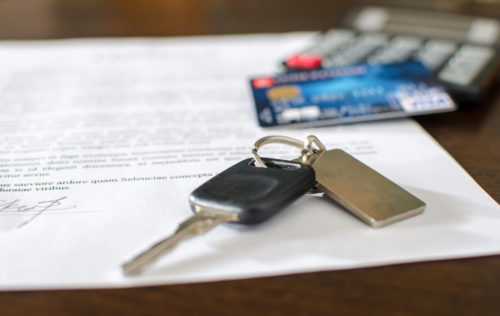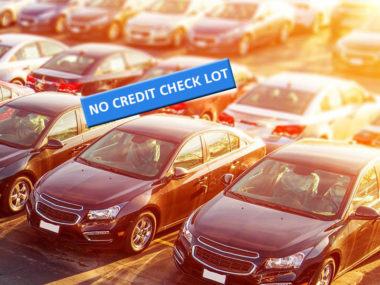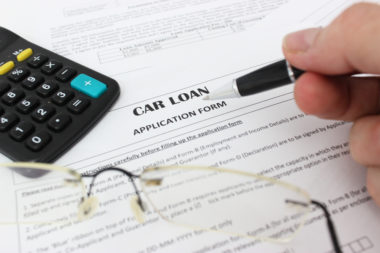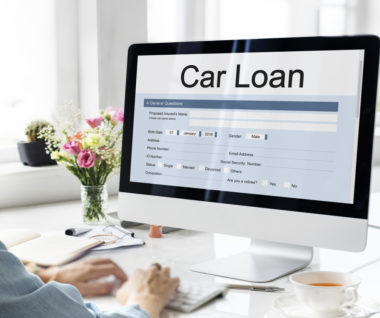When you originally bought your car, you may have reviewed the payment schedule and interest for the car loan and felt you could easily afford to take on the debt within your budget. However, your financial circumstances can quickly change. You could face unexpected expenses, suffer a drop in household income, or become responsible for a new family member.
If you’re dreading an upcoming auto loan payment because you simply don’t have the funds to cover it, you may be questioning whether you can use a credit card to cover the payment. It’s important to understand your payment options, especially if this month’s auto loan payment simply won’t fit in your budget. Review this information to learn more about using a credit card and whether it’s beneficial to pay your auto loan using this method.
Table of Contents
The Basics of Paying a Car Loan With a Credit Card
Every car loan has different terms, including the annual percentage rate (APR), length of the loan, and loan amount. Lenders also offer different payment methods for your car loan.
To learn whether your lender accepts a credit card payment, you’ll need to review the terms and conditions of your specific loan. You can also contact your lender directly to ask about acceptable payment methods.
How to Determine if Your Lender Allows Credit Card Payments
Since every lender is different and loan terms may vary, there’s no simple answer to whether you’re permitted to pay for your car loan payment with a credit card. Your lender should have provided you with a contract that outlines the terms of your loan. To find out about credit card payments, review this contract and look for the payment methods your lender accepts.
Understanding Any Processing Fees
When you find information in your contract about payment methods, it’s also important to delve deeper and learn about potential processing fees. While your lender may accept a credit card as a valid payment method for your auto loan, you may also be charged processing fees for this type of payment.
In some cases, it may not be worth paying your loan with a credit card if the fees are high. Most lenders or credit card companies charge 2% to 5% for processing.
Pros and Cons of Paying an Auto Loan With a Credit Card
Before you decide to pay your auto loan with your credit card, it’s important to review the advantages and disadvantages of using this payment method.
Advantages
In some cases, you may benefit from using your credit card for your auto loan. First, you’ll need to see if your credit card offers balance transfers. If so, you can transfer the balance of your auto loan onto the card. If your card also offers a 0% APR for balance transfers, you can save money on the interest your auto lender would have charged.
When you transfer your balance to a 0% APR credit card, you’re transferring your debt to a no-interest loan. Your credit card’s minimum monthly payment may be lower than the payment you were responsible for with your auto loan, which can also save you money.
Disadvantages
If you can’t find a balance transfer that offers a low or no APR and low minimum payment, it may not be beneficial to use a credit card to pay your auto loan. When you put more debt onto a credit card, you increase your credit utilization ratio, or the amount of credit you use compared to what’s available, which can lower your credit score.
If you already have debt that you’re working to pay off, transferring the balance of your auto loan to a credit card that doesn’t offer desirable terms may make your situation worse. Not only is your credit score negatively affected, you may also get into more debt as the interest piles on. If you can only afford the minimum payment, transferring your balance makes it nearly impossible to get out from under your credit card debt.
Can’t Afford Your Car Payment? Exploring Your Options
If you can’t afford your auto loan payment and know paying with a credit card isn’t right for your situation, there are other options.
“Skip” a Payment
Your lender may offer a “skip a payment” option for your auto loan. This allows borrowers to skip one or more payments throughout the life of the loan if they’re temporarily struggling. You may need to meet certain qualifications outlined by your lender and you may incur fees if you opt to skip a payment.
Generally, lenders require you to consistently make your monthly loan payments for a certain period of time before you qualify. You may be charged a $25 to $50 fee per skipped payment, depending on your lender’s terms.
Cash Advance
A cash advance loan is a short-term loan that provides you with a small amount of money to cover expenses. You’re required to pay back the loan in a short period of time plus interest. Not adhering to cash advance loan terms can lead to hefty penalty fees and interest charges will rack up, leaving you in even bigger debt. However, if you know you’ll be able to pay the loan back, it may be a viable option if you’re temporarily in a bind.
Explore Quick Ways to Make Cash
To avoid taking out another loan or getting into deeper debt, you may try to earn cash quickly so you can make your auto loan payment. To earn money fast, you could:
- Sell items at home: If you have items you don’t need, host a garage sale or use online sales sites, such as OfferUp, to make some quick cash.
- Try a microjob: Microjob platforms, such as Amazon’s Mechanical Turk, allow you to do small tasks for a few dollars, which can add up to help make your loan payment.
- Donate plasma: You can make money by donating your blood plasma to a hospital or medical center, as long as you meet the health qualifications.
Even if your lender allows you to pay your auto loan with a credit card, it’s important to understand the disadvantages of taking on credit card debt. If you’re having trouble making your auto loan payment, look into other options that will help you get back on budget and striving toward your financial goals.
Image Source: https://depositphotos.com/





